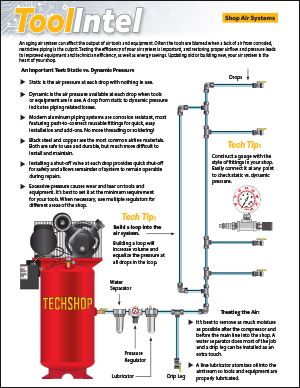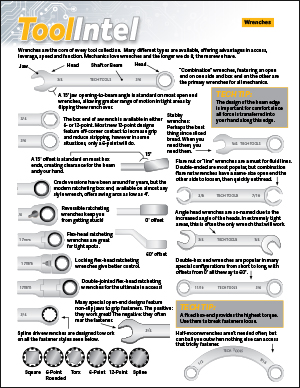Maintenance intervals on late-model vehicles have been stretched to the limit, and spark plugs are no exception. Most original equipment spark plugs today are long-life plugs with a recommended replacement interval of 100,000 miles or more. To some motorists, that means never. In theory, longer plug life means the plugs don’t have to be changed as often. Under normal circumstances, that’s true. But long life plugs don’t always go the distance. Any number of things can cut service life short. Prolonged idling and short-trip driving (especially during cold weather) may allow deposits to build up on the plugs faster than they can be burned off. Eventually, this can lead to plug misfire and driveability and emissions problems.
As engines wear, oil consumption increases. This, too, may lead to premature plug fouling. Oil drawn past worn rings and valve guides will form heavy, black, oily deposits on the plugs causing them to misfire. Even normal driving will eventually wear out the plugs. Every time a spark plug fires, the spark blasts loose a few molecules of metal. It isn’t much, but after tens of thousands of miles it can add up quite a bit. Wear increases the distance between the electrodes as the sharp edges of the electrodes wear down and increases the voltage needed to create an arc. This, too, can cause misfiring and poor ignition performance.
With standard spark plugs, electrode wear and fouling typically limit plug life to about 30,000 to 45,000 miles. So every couple of years, the plugs need to be changed to restore like-new ignition reliability and performance.
With long-life plugs, electrode wear is reduced by using wear-resistant metals such as platinum, iridium and yttrium. These exotic metals can withstand much higher operating temperatures than standard nickel alloy electrodes, so wear is significantly reduced. Most of these plugs are capable of going up to 100,000 miles or more before they have to be changed. Long-life plugs are more expensive than standard spark plugs, but actually save money in the long run because they last more than twice as long as standard plugs. On engines where the spark plugs are buried and hard to change, this benefit alone is more than worth the slightly higher price. Long-life plugs also maintain fuel economy and emissions longer, so there’s less fuel wasted and less pollution because of misfires. These are all good reasons for recommending long-life plugs.
Replacement plugs should have the same heat rating as the original. Going up one number (hotter) helps reduce fouling in engines that spend a lot of time idling or are only used for short-trip driving. Going down a number (colder) may reduce the tendency to preignite in performance applications or hard-working engines.
When the plugs are replaced, the spark plug wires should also be inspected and replaced if the insulation is cracked or worn, or end-to-end resistance exceeds specifications. Plugs in engines with aluminum heads should be changed when the engine is cold to minimize the risk of damaging the plug threads in the head. The electrode gap should also be checked before the plugs are installed. Plugs are pre-gapped at the factory, but consolidation may mean some plugs need to be adjusted slightly. However, some plugs require no gapping at all, so advise customers according to the manufacturer’s specifications.
WIRE SETS
On engines that do not have coil-on-plug (COP) ignition systems, spark plug wires conduct high-voltage from the ignition coil(s) to the spark plugs.
The voltage surges can range from 5,000 to 25,000 volts or more every time the plugs fire, which can be thousands of times a second when traveling down the highway. The voltage that passes through the plug wires changes with engine load and speed. It takes a lot of voltage to fire the spark plugs because the spark has to jump across an air gap between the spark plug’s electrodes. The wider the gap, the more energy it takes to jump the gap. And when the engine is under load, it takes even more energy to fire the spark plugs.
So why do plug wires go bad? There are a variety of reasons. The insulation around the plug wires can be damaged by excessive heat or from rubbing against a sharp edge. Cracks or thin spots in the insulation may then allow the spark to “leak” through the insulation and ground out. The situation is often made worse during wet, damp weather when condensation forms on the outside of the wires.
The internal resistance in some types of wires can also change as the wires age. A gradual increase in resistance may occur over time in “distributed resistance” (carbon-core) suppression wires. These kinds of wire sets do not have “real” wire inside them. Instead, they have a graphite-impregnated fiberglass or kevlar core that provides a conductive path for the voltage. These wires must be handled with care because mishandling can damage the core. Too much heat and vibration may also cause the internal resistance of the wires to increase to the point where resistance exceeds specifications and the plugs misfire.
Another style of plug wire that is used on many late-model vehicles is less vulnerable to changes in internal resistance. These kind of wires have an “inductance” or “mag-style” core that consists of nickel stainless steel wrapped around a fiberglass or kevlar core. The resistance is lower, and the wire uses the magnetic field to suppress RFI. This allows the wire to pass more energy to the plugs for improved ignition reliability.
Replacement wire sets are available in different materials (distributed resistance or inductive core), different diameters (7mm, 8mm, etc.) and with different grades of insulation. Economy wire sets typically use less expensive insulation that may not be multi-layered or as durable as those in premium wire sets. Premium wire sets typically use materials that are more heat and vibration resistant, such as EVA (ethylene vinyl acetate), EPDM (ethylene propylene diene monomer) or silicone. Some wire sets may have an inner layer of EPDM surrounded by an outer layer of silicone or a double layer of silicone around the core.
When plug wires are replaced, the wires must be routed the same as the original wires to maintain the correct firing order. The best way to avoid mix-ups is to replace the wires one at a time. Start with the longest wire first, then the next longest and so on until all the wires have been replaced. Route the wires away from sharp edges, hot exhaust manifolds and other wires (such as sensor wires), and make sure the wires are supported in the original guides.














